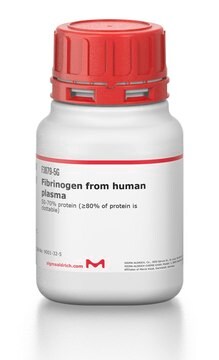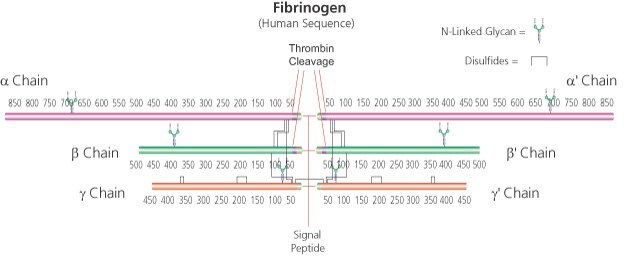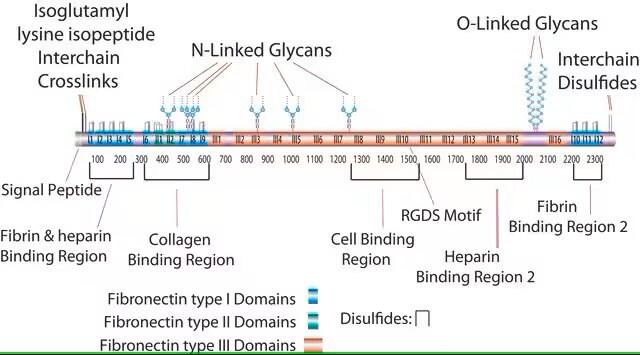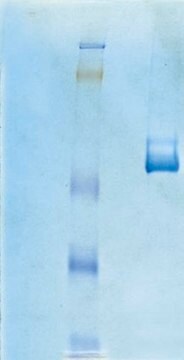FC010
Human Fibronectin
from human plasma, liquid, 1 mg/mL, purified protein, suitable for cell culture
Synonim(y):
Fibronectin protein
About This Item
Polecane produkty
product name
Human Plasma Fibronectin Purified Protein, from human plasma, liquid, 1 mg/mL (100 MG pack size is lyophilized), purified protein, suitable for cell culture
pochodzenie biologiczne
human
Poziom jakości
Próba
~95% (SDS-PAGE)
Postać
(liquid: 1MG, 5MG, 10MG pack size
lyophilized: 100 MG pack size)
masa cząsteczkowa
220 kDa
producent / nazwa handlowa
Chemicon®
stężenie
1 mg/mL
metody
cell culture | mammalian: suitable
pokrycie powierzchni
2—10 μg/cm2
moc wejściowa
sample type mesenchymal stem cell(s)
sample type neural stem cell(s)
sample type: human embryonic stem cell(s)
sample type epithelial cells
sample type hematopoietic stem cell(s)
sample type induced pluripotent stem cell(s)
sample type pancreatic stem cell(s)
numer dostępu UniProt
Specyficzność wiązania
Peptide Source: Collagen
Peptide Source: Laminin
Warunki transportu
wet ice
temp. przechowywania
2-8°C
informacje o genach
human ... FN1(2335)
Opis ogólny
Zastosowanie
Działania biochem./fizjol.
Postać fizyczna
Przechowywanie i stabilność
Komentarz do analizy
Inne uwagi
1.Determine the amount of HFN needed to coat culture vessels by multiplying the total surface area (cm2) by the desired concentration (μg/mL) of HFN. Recommended amount is 2-10 μg/cm2.
2.Wet the surface of each culture vessel to be coated with a minimum amount of sterile balanced salt solution (serum and protein free) required to cover the entire area.
3.Introduce the proper CO2 atmosphere, if required.
4.Add the calculated amount of HFN to each culture vessel.
5.Allow HFN to adsorb to the surface of the vessel for 5-20 minutes.
6.Remove residual balanced salt solution before proceeding with standard cell culture procedures
Product is filtered using a 0.1 micron filter during production. It is recommended to filter product again before use/after reconstitution.
Informacje prawne
Oświadczenie o zrzeczeniu się odpowiedzialności
Kod klasy składowania
11 - Combustible Solids
Klasa zagrożenia wodnego (WGK)
WGK 3
Certyfikaty analizy (CoA)
Poszukaj Certyfikaty analizy (CoA), wpisując numer partii/serii produktów. Numery serii i partii można znaleźć na etykiecie produktu po słowach „seria” lub „partia”.
Masz już ten produkt?
Dokumenty związane z niedawno zakupionymi produktami zostały zamieszczone w Bibliotece dokumentów.
Klienci oglądali również te produkty
Produkty
Attachment Factors for 3-Dimensional Cell Culture
Macierz zewnątrzkomórkowa (ECM) i jej składniki czynnika wiążącego są omówione w tym artykule w odniesieniu do ich funkcji w biologii strukturalnej i ich dostępności do zastosowań in vitro.
The extracellular matrix (ECM) is secreted by cells and surrounds them in tissues.
Development of a novel serum-free and xeno-free human mesenchymal stem cell (MSC) osteocyte differentiation media.
Protokoły
Rozcieńczona fibronektyna do mocowania komórek, w zależności od typu komórek. Protokół powlekania, produkty i często zadawane pytania.
Dilute fibronectin to the desired concentration. Optimum conditions for attachment are dependent on cell type and application. The typical coating concentration is 1 – 5 ug/cm2.Fibronectin coating protocol, products, and FAQs.
This page covers the indirect co-culture of embryonic stem cells with embryonic fibroblasts.
Informacje na temat mezenchymy, w szczególności protokołów mezenchymalnych komórek macierzystych. Protokoły hodowli komórkowej krok po kroku do izolacji, ekspansji i różnicowania mezenchymalnych komórek macierzystych (MSC).
Powiązane treści
This page covers the ECM coating protocols developed for four types of ECMs on Millicell®-CM inserts, Collagen Type 1, Fibronectin, Laminin, and Matrigel.
Nasz zespół naukowców ma doświadczenie we wszystkich obszarach badań, w tym w naukach przyrodniczych, materiałoznawstwie, syntezie chemicznej, chromatografii, analityce i wielu innych dziedzinach.
Skontaktuj się z zespołem ds. pomocy technicznej









